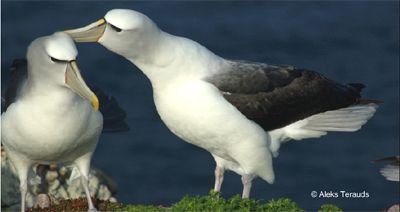The first Australian Recovery Plan for albatrosses and giant petrels was released in October 2001 in recognition of the need to develop a co-ordinated conservation strategy for albatrosses and giant petrels listed as threatened under the Environment Protection and Biodiversity Conservation Act 1999 (EPBC Act). In terms of the Act, the Environment Minister must review a recovery plan at intervals of no longer than five years. The 2011-2016 Recovery Plan includes the results of that review process.
The new Recovery Plan for albatrosses and giant petrels was approved on 23 May and entered into force on 25 May 2011 as an Australian legislative instrument, which in practice means that all national agencies (e.g. the Australian Fisheries Management Authority) must not act in a manner that is inconsistent with the actions prescribed in the plan.
Twenty-one species (19 albatrosses and two giant petrels), all listed within the Albatross and Petrel Agreement (ACAP) and following its taxonomy, are covered by the new Recovery Plan. A Background Document reviews in broad terms what is known about the species covered, their distribution, the threats they face and how to avoid or reduce them, and the management consequences.
The two documents have been developed by the Australian Antarctic Division (AAD) of the Australian Department of Sustainability, Environment, Water, Population and Communities.
References:
Department of Sustainability, Environment, Water, Population and Communities 2011. National Recovery Plan for Threatened Albatrosses and Giant Petrels 2011-2016. Hobart: Commonwealth of Australia. 30 pp.
Department of Sustainability, Environment, Water, Population and Communities 2011. Background Paper, Population Status and Threats to Albatrosses and Giant Petrels Listed as Threatened under the Environment Protection and Biodiversity Conservation Act 1999. Hobart: Commonwealth of Australia. 139 pp.
Click here to access both the above documents.
Click here to access the Australian Threat Abatement Plan 2006 for the Incidental Catch (or Bycatch) of Seabirds during Oceanic Longline Fishing Operations.
With thanks to Ian Hay, Australian Antarctic Division for information.

John Cooper, ACAP Information Officer, 1 July 2011

 English
English  Français
Français  Español
Español